Article: The journey of textile fibers : what is wool?
The journey of textile fibers : what is wool?
The journey of textile fibers : what is wool ?
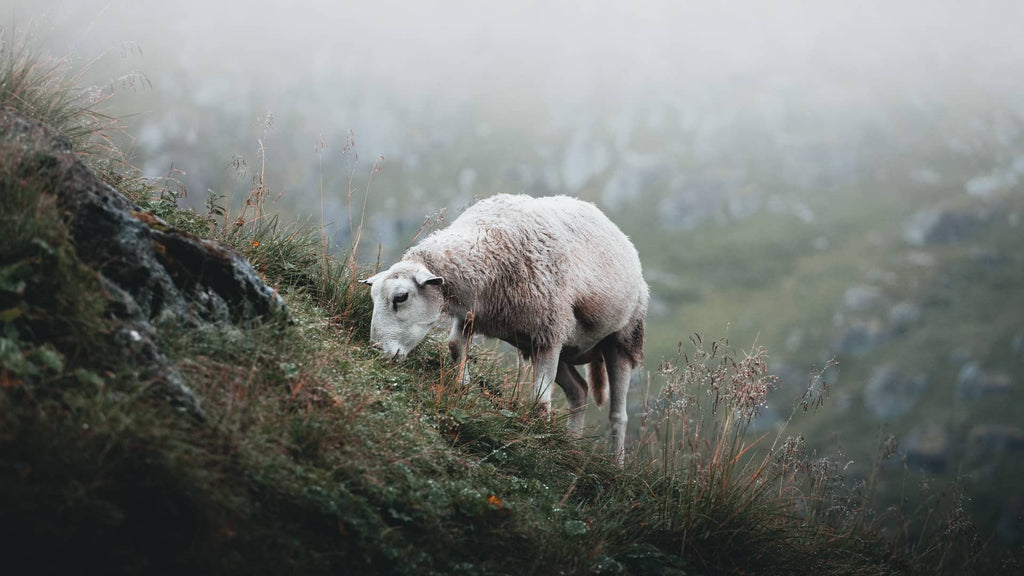
After introducing you to plant textile fibers, it is time to take an interest in animal textile fibers by focusing on our beloved material: wool .
Among the various sources of textile fibers, animal fibers have occupied a special place, offering an unparalleled richness of textures, warmth and comfort. Representing 1.6% (1.8 million tonnes) of textile fibers produced worldwide in 2021, they come from sheep , alpaca and even angora wool . Throughout history, they have been used to make comfortable, breathable and durable clothing as well as to design furnishing fabrics or bedding.
With an often criticized ecological impact, animal textile fibers are nevertheless experiencing renewed interest, driven by their specific characteristics, new production methods and technological advances making it possible to limit the impact of their cultivation on the planet.
For this second stage of our tour of textile fibers, we will detail our favorite fiber, wool, its unique characteristics allowing the manufacture of high quality clothing, its environmental impact, the new sustainable practices that are emerging, and finally, the particular case French wool (cocorico!).
Wool: the noble raw material per excellence!
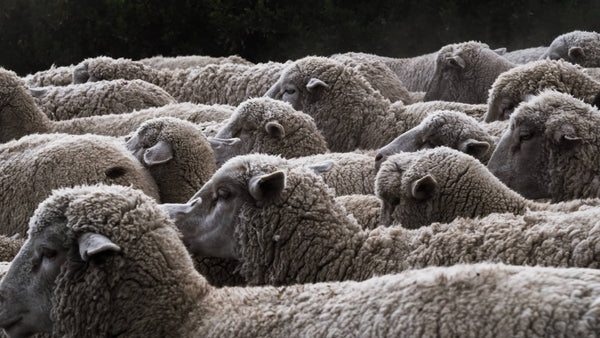
For thousands of years, wool has had a unique history with humans.
This natural fiber, derived from the fleeces of sheep, goats, llamas and other animals, has played a vital role in human history, becoming both a symbol of tradition and an ideal material for innovation .
Preciously harvested, spun, woven and transformed since ancient times, wool has allowed men to both tame the vagaries of the climate and to dress them with elegance. But its use is not limited only to the textile industry: furniture, sports, bedding, many sectors use this exceptional resource as a material of choice in the creation of their products. The various crossings of species carried out throughout History have also made it possible to considerably improve the qualities of wool to obtain a virtuous raw material with countless virtues. Possessing a multitude of properties such as softness, breathability, resistance and durability, wool has always had a high-end image, which allowed its use to soar until the early 2000s, years marked by the arrival synthetic fibers such as polyester or polyamide. This arrival of these new fibers, with lower production costs, led to a drop in its use.
Today, although wool remains the most used material of animal origin in the textile sector in the world with more than a million tonnes (i.e. 1% of the total textile fibers produced in 2021 according to Textile Exchange ), its use remains in the minority compared to synthetic fibers (68% of the total textile fibers produced in 2021). It even experienced a drop in its production of 32% between 1995 and 2021 , with a decrease of more than 50% in the production of Australia and New Zealand for example (Source: IWTO ). The reasons for this drop in production are numerous: increase in production costs, drop in selling prices, centralization of production, use of substitute materials (cotton, chemical artificial fibers, synthetic fibers, etc.) and, more recently, the effects of global warming (drought, flooding, soil exhaustion, scarcity of natural resources, etc.).
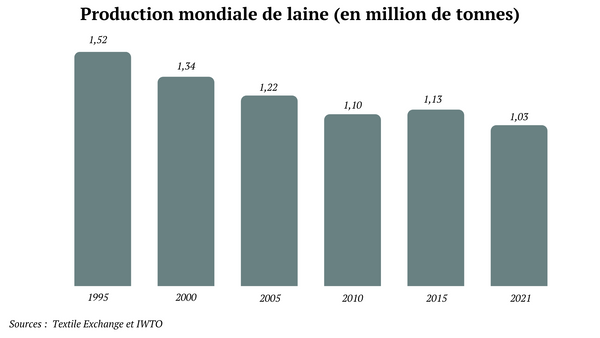
More generally and more previously, these phenomena have also led to a real shift on the world stage for wool producers. While Europe was the stronghold of wool until the beginning of the 19th century, both in terms of production and industrial equipment, the situation completely changed from this century onwards.
Faced with competition from cotton, a less expensive fiber, available in large quantities and easy to work with, the global wool industry centralized itself in a new territory to the detriment of Europe: Australia .
In a few decades, driven by immense fertile lands, an ideal climate, new inventions and crossbreeding which led to very soft wool, the industry concentrated its production on these two territories, causing the wool to fall into disuse. European production.
Today, Australia is still the country in which the most wool is produced with more than 220,000 tonnes produced in 2021 ( 22.1% of world production). And if we add the 97,000 tonnes produced by New Zealand ( 9.4% of world production), the production of these two countries rises to more than 30% of world production!
On the European side (geographically), production is an extremely minority (less than 8% of world production ), even more so when we compare it to its glorious past. For example, France covers less than 1% of global production, which places it very far from the behemoths that are Australia, China, New Zealand or even Turkey.
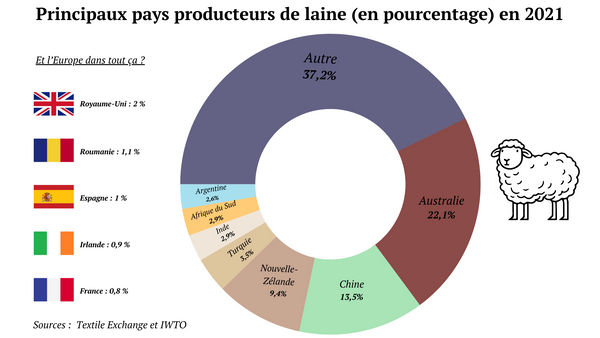
What are the different types of wool?
Wool from sheep, merino, Shetland, lamb, vicuna, alpaca, cashmere, angora or mohair. There are multiple types of wool and wool, each of which has its own characteristics, reflections of the environment in which the wool evolves. animal.
Sheep's wool

Before tackling particular wools such as the wool of merino or Shetland sheep, we will focus on so-called “traditional” wool , that is to say that of common breeds, which do not come from a breed with characteristics specific and world-renowned such as merino wool or Shetland wool.
A brief analysis of a sheep's fleece is in order. It is made up of two layers of hair: short, fine hairs with insulating properties, which constitute wool, and coarse and rigid hairs called “jarres” which serve to protect the animal against bad weather.
Due to the large number of different species raised all around the globe (more than 1000!), “traditional” wool includes both wools with fine fibers and more “rustic” ones. The fineness of sheep's wool is measured in microns. For sheep's wool, it is therefore often distributed between 20 microns for the finest fibers and 40 microns for the most rustic fibers. The finest fibers (between 20 and 25 microns) will be reserved for the manufacture of woolen clothing while the thicker fibers (over 30 microns) will be reserved for the manufacture of carpets or fabrics. furnishings.
Merino wool

Let's continue with, certainly the most famous wool: merino wool . A reference wool, it does not come from Australia or New Zealand, as one might believe, but from Europe, and even close to home since it is native to Spain. Its production supports more than 50,000 farmers in Australia and several thousand elsewhere. The farms are largely family-owned and the workforce linked to this sector is estimated at more than 20,000 people . They are mainly located in two states: New South Wales and Victoria.
This wool, present in abundance (a merino sheep can produce up to 9 kilos of wool per year), is recognized worldwide for the fineness of its fibers (between 15 and 21.5 microns). Long and shiny, they make it possible to make very soft, breathable and comfortable knitwear. Its finest fibers are even highly sought after and used for the manufacture of technical clothing such as skiing or hiking clothing.
Other sheep wools: Shetland and lamb
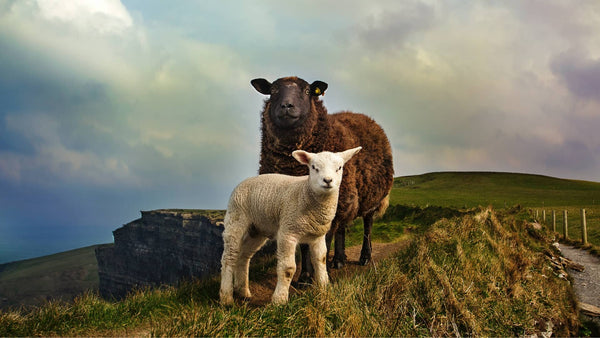
Let's continue with another wool widely used across the Atlantic: Shetland wool . Coming from sheep of the same name, this emblematic wool of the United Kingdom comes straight from the Shetland Islands, located in the north of Scotland. The Shetland sheep is considered a natural breed, meaning that this breed has hardly changed over the centuries. This breed, robust and adaptable, presents 11 different natural colors , which allows the wool to be transformed without having to dye it.
Its wool, with a felted feel, is supple, resistant and insulating. It allows the manufacture of a heavy and robust fabric, emblematic of English gentlemen's jackets: tweed.
Lambswool or lambswool comes from the first shearing of lambs. It is distinguished by its softness and warmth. Its short and fluffy fibers must, however, be mixed with longer fibers to reduce the phenomenon of pilling. This wool is particularly used for making very soft sweaters or scarves.
Alpaca and vicuña: the wool of camelids

Do you know the alpaca ? This peaceful herbivore, native to South America, is recognized worldwide for its exceptional fleece . Offering a range of more than 22 natural colors , this high-end wool is softer, more resistant, warmer and lighter than sheep's wool. Its incredibly fine fibers are used in particular to make sweaters, scarves and hats. Each alpaca gives on average 2.5 kilos of wool per year and its fleece can be kept for 2 years. It is more suitable for making mid-season clothing. The production of this high-end fiber is largely carried out in Peru (where nearly 4 million alpacas reside), thanks to sustainable production, organized with small farms operating independently. The overall production of this exceptional wool is estimated at nearly 6,244 tonnes in 2021.
Considered the finest wool in the world, vicuña wool is incredibly fine. Very expensive and rare (each animal only produces 200 grams of raw material per year), it is only used by the luxury industry. The vicuña is a mammal native to South America that has been at risk of extinction for centuries. Today, thanks to strict supervision of wool collection and the promotion of sustainable shearing, the number of vicuñas has increased considerably. Mowing is carried out according to ancient principles by Andean communities. In detail, the vicuña is sheared and then released into its natural habitat, respecting the traditions of the Andean communities.
Cashmere and mohair: goat wool
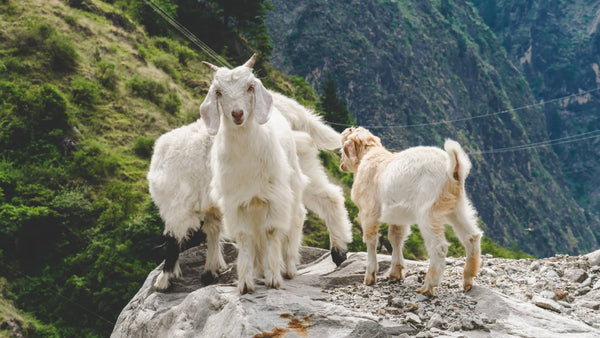
Considered one of the most beautiful wools thanks to its softness, shine and thermoregulatory properties, cashmere goat wool is a renowned material, highly appreciated in the luxury industry. Originally from Central Asia, this goat with its exceptional fleece thrives in a mountainous world where its coat allows it to calmly face the polar cold of the region. According to Textile Exchange , of the 26,000 tonnes of cashmere produced each year, 95% is produced in two countries : China (58% of global production) and Mongolia (38%).
Did you know that mohair comes from Türkiye? Indeed, Angora goats , producers of this wool with its incomparable softness and subtle shine, come from Ankara, in Turkey. Very insulating, thermoregulatory and light, this exceptional wool also has the particularity of reacting particularly well to dyeing, the colors are thus enhanced. Production was estimated at 4,590 tonnes in 2021 according to Textile Exchange , and concentrated in Africa with more than 50% of global production carried out in South Africa.
Wool qualities
Wool is often presented as a particularly difficult material to maintain. However, if you have paid attention to our advice on caring for wool clothing , this is not the case! And beyond its ease of maintenance, wool is also a material with multiple virtues.
Which ones?
Firstly, it's the most well-known quality, but wool keeps you warm, it can even keep you very warm. But it would be incomplete to only consider wool through the prism of heat. In truth, it protects from both heat and cold thanks to its thermoregulatory properties .
Wool is also recognized for its strength , elasticity and lightness . A wool fiber can be twisted and folded more than 20,000 times without breaking.
Other important points: it is a breathable , healthy and antibacterial material. In fact, wool limits sweating, neutralizes odors and regulates the humidity released by our body, for healthy and comfortable warmth. In addition, thanks to its moisture absorption capacity and ventilation, wool limits the development of dust mites and attracts little dust.
Finally, wool is a natural , durable and biodegradable material. Beyond growing all year round on the backs of animals, wool can also be composted and acts as a long-lasting ecological fertilizer for the soil. Products made from wool are often synonymous with longevity and will accompany you for many years. It is also a material that is very easily recyclable, which gives a second life to your favorite wool sweaters.

Is the global wool market sustainable?
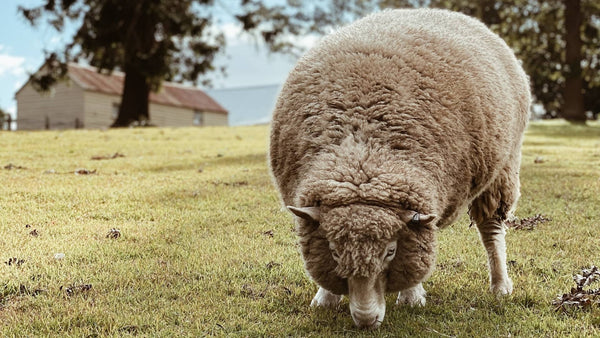
Answering this question is relatively complicated and requires a nuanced response, as it requires taking into account multiple parameters that we will quickly explain to you.
On the one hand, the world market, marked by intensive breeding , has been or still is generating multiple problems, of an ecological, ethical or social nature, which do not allow the question to be answered in the affirmative.
Firstly, the entire transformation process can be extremely resource-intensive, energy-intensive and emitter of greenhouse gases. Indeed, before becoming a finished product, wool goes through no less than 6 stages of transformation (see our article on the stages of manufacturing wool products ).
First of all, intensive breeding can lead to significant use of resources , natural or not. Sheep need a lot of space to graze, which leads to increased salinity and soil degradation and decreased biodiversity. And the more the number of sheep increases, the more the number of lands allocated to their breeding increases… In addition, intensive breeding requires an enormous quantity of water to feed the animals, a resource which, let us not forget, is not not inexhaustible. Finally, pesticides and insecticides are used to treat sheep and prevent parasites from proliferating and impacting the health of the animals.
Then, each manufacturing stage will require a significant mobilization of resources such as washing or dyeing the wool which requires a large quantity of water, and often chemical substances . Then comes the electricity consumption of the following stages which, depending on the energy mix of the producing country, can vary by a factor of two, leading to a model including a small share of renewable energies.
But intensive wool production does not only involve ecological problems, there are also ethical issues that should not be overlooked.
Indeed, the production of wool has for many years been a subject of controversy: mulesing, marking, poor consideration of the health of workers and animals , many have been the subjects which have tainted the production of this exceptional fiber. .
A practice banned in Europe, mulesing is one of the main examples of these morally questionable practices that have moved the entire world. It consists of removing the skin located around the tail of merino sheep in order to prevent the appearance of myiasis (a disease that merino sheep catch and which is characterized by the subcutaneous presence of fly larvae) endangering the health of the animal and therefore, the quality of its wool.
So why is this a practice that raises so much debate?
Firstly, because the operation is carried out without anesthesia by the breeders themselves and the sheep on which the operation is carried out do not benefit from appropriate medical monitoring. It is generally estimated that the animal will heal in 2 or 3 weeks, if the operation does not degenerate into an infection, traumatizing the animal for life.
However, as wool lovers, we think that wool can still be considered an eco-responsible fiber, as the qualities of this fiber are numerous.
So, as said before, wool is a highly durable material. It is estimated that a wool garment has a lifespan of up to 10 years while clothing made from other textile fibers is between 2 and 3 years . In addition, wool is very easy to maintain and requires little washing, between 2 and 3 per season at most, which therefore considerably reduces, de facto, the water used for its maintenance. Finally, wool is a very easily recyclable and biodegradable material ; it is even the most reused and recycled textile fiber in the world. They can be frayed, then mixed with new fibers to create a new yarn, and finally, a new sweater. Wool retains all its insulating and thermoregulatory properties. Biodegradable, it can also act as a soil fertilizer and therefore improve other crops.
Secondly, wool is increasingly produced in an ecological and ethical manner on the global market. Thanks to labels and certifications such as RWS (Responsible Wool Standard) which attests to wool production responsible for the well-being of sheep and the land on which they graze. RWS certification ensures that the wool comes from farms that have a progressive approach to the management of their land and that practice respect for animal welfare (breeding, shearing, end of life).
It also meets social standards based on the international labor organization, for example by prohibiting discrimination or forced labor. Today, RWS wool production is growing exponentially , doubling for example between 2020 and 2021 (from 24,195 tonnes in 2020 to 51,078 tonnes according to Textile Exchange ).
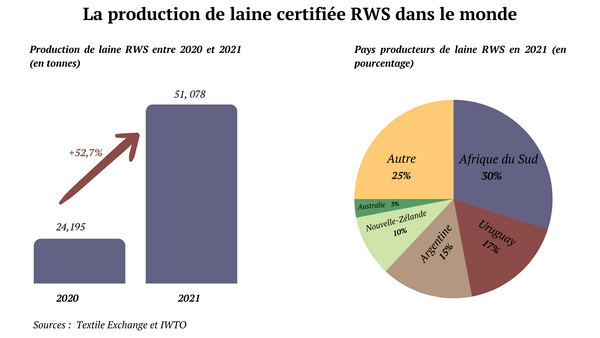
But the RWS certification is not the only label or certification that attests to wool produced ethically and responsibly; we can cite world-renowned labels such as the GOTS or OEKO-TEX label.
A little earlier in the presentation, we discussed mulesing. More and more brands are now opposing this practice (the number of brands opposing this practice has increased from 100 brands in April 2020 to 306 in July 2022 according to Four Paws ).
As you can see, the answer to the initial question is tinged with nuance. At Maison Izard, as lovers of wool and its virtues, we are convinced that wool can be considered an eco-responsible fiber as long as it respects the environment, animals and people, and is produced locally.
Is local wool sustainable ?
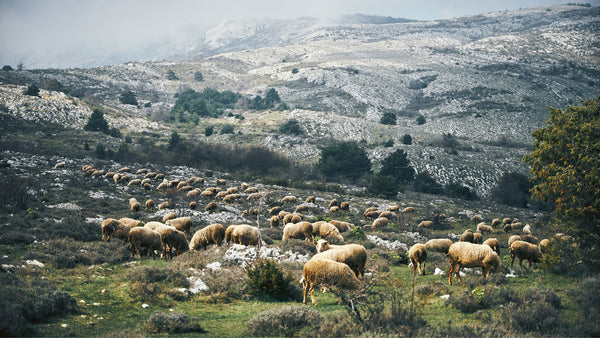
Now that we have addressed the general framework of the global wool market, and its excesses, it is time to focus on the particular case of local wool , wool that we know well...
First of all, intensive sheep farming is not practiced in France. In 2021, there were approximately 71,170 farms with at least 1 sheep including 19,689 farms with more than 50 ewes , or 27.7% of farms in France (Source: BDNI 2019 census as of March 14, 2020 ). Among these farms of more than 50 sheep, the average was around 258 animals on average , which remains far from the huge farms that we can find in Australia or New Zealand. In addition, French livestock and the number of farms have decreased considerably since the 1990s (more than half the number of animals and farms according to the November livestock surveys and the 2000, 2010 and 2020 Agricultural Censuses and the census BDNI 2019 as of March 14, 2020 ). The main explanation for these notable declines is the low population renewal rate of sheep breeders . Indeed, in 2020, 50% of suckler sheep breeders were over 50 years old and 46% of dairy sheep breeders were over 50 years old (Source: Agreste agricultural census, Livestock Institute processing ). This low renewal rate can be explained by several factors: low pay, enormous work and manual work that is often poorly valued . Thus, if there is no possibility of taking over farms, the numerous retirements in the years to come will not slow down the decline in the number of farms and animals.
Which would be a shame, because in France, wool is a resource that can be produced locally and responsibly , while allowing the creation of numerous jobs on its long production chain (breeding of course, but also, spinning, weaving or knitting). Thus, wool production could enable the creation of real employment areas in rural regions . Furthermore, by taking advantage of the wealth and specificities of our territory and the fifty different breeds of sheep present in France, sheep farming can prosper responsibly , without endangering biodiversity and by playing an essential role in the occupation and maintenance of the areas in which it is located.
Thus, a “rainy” region (like ours) is perfectly suited to sheep farming thanks to the optimization of pastures, which make it possible to limit imports and transport of cereals and fodder, and water resources. and energy.
Finally, in Europe and in France in particular , wool is often considered as a “by-product” , that is to say that sheep are not raised only for their wool , but for their milk or their meat. And this is a big problem for breeders because the wool must be stored. Since 2009, EC Regulation No. 1069/2009 of the European Parliament and of the Council of October 21, 2009 prohibits breeders from taking their wool to recycling centers, burning it, burying it, or using it in any form. that is, if it is raw. This European decision is obviously an excellent thing, but the problem for breeders is that they still have to shear the sheep to prevent them from suffering from the heat in summer. However, as wool has lost its value, the cost of shearing does not always cover the selling price , which complicates an already very difficult equation. The valorization of this local resource would therefore, in the long term, increase its selling price, and therefore, the remuneration of the people who produce it.
For us, local wool is therefore an eco-responsible fiber, it makes it possible to promote a natural, local, sustainable resource, with a thousand and one virtues for a multitude of areas, as well as to allow the creation of an entire virtuous ecosystem.


